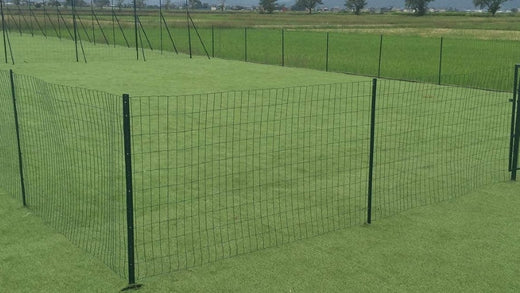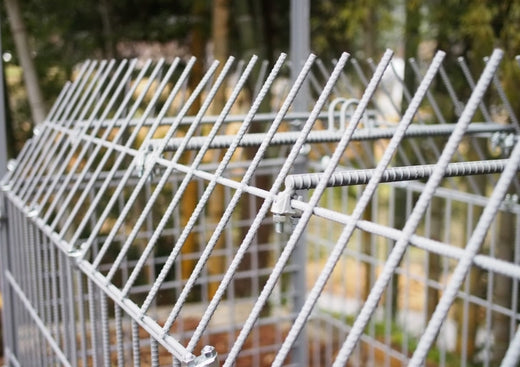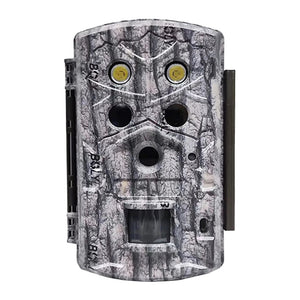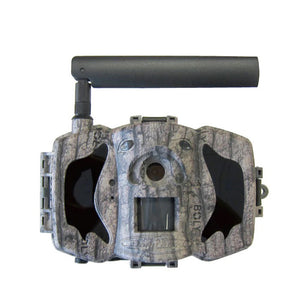A trail camera is a small photo/video camera designed to be installed outdoors.
The camera has a sensor that detects motion. If the sensor does not detect a moving object, it will remain in the standby state, but if it detects a moving object, it will start shooting.
It is fixed to a tree or electric pole using a belt or the like, and used for observing wild animals and nature, crime prevention, etc. Since it is powered by batteries, there is no need to secure a power supply or work during installation.
Easy installation and easy shooting, I will explain the charm of such a trail camera and how to choose it.
Uses for trail cameras
It can be installed in various places, so it can be used for a wide range of purposes from outdoor to crime prevention.Lookout for set traps (hunting)
Trail cameras are very useful for observing the behavior of targets in trap hunting such as box traps and tie traps.
For example, "When I look around the set trap, the sky is repelled, but I don't know the cause." Images taken with trail cameras can highlight causes and countermeasures.
Identification of criminals who destroy fields and houses (wildlife damage countermeasures)
It depends on the installation method and specs, but basically the image is very beautiful, and you can take clear images that even faces can be recognized.
If someone damages the crops or houses in the fields, it is necessary to identify the culprit in order to take countermeasures.
In addition, there are cases where trail cameras are used to identify owners because pets often drop things in front of their homes, and trail cameras are installed in gardens and indoors to know the behavior of pets while they are away or at night. I have.
Ecological observation of wild animals
Trail cameras are also recommended if you want to observe how animals that run away as soon as humans approach them live.
Animals in the wild move quickly, so it is difficult for humans to follow and shoot the subject. Even at night, the flash provides a clear image.
It is also used for observing plant growth. In that case, it is convenient to use a function called time-lapse shooting (shooting like frame-by-frame. Details will be described later).
Crime prevention purpose
There are many cases where it is used for illegal dumping, parking lot mischief, burglary, and shop security. If you want to install a fixed type security camera, it costs about 50,000 to 60,000 yen even if it is cheap, and it cannot be relocated. Trail cameras, on the other hand, are inexpensive to install and easy to relocate.
Fixed point photography during outdoor activities
Taking advantage of the feature of automatic shooting that does not require a cameraman, it can also be used as a fixed-point shooting camera for activities in nature.
For example, in the case of a survival game (survival game) that uses airsoft guns and BB bullets, if there is a cameraman, they may get in the way or be shot by mistake, but trail cameras are safe.
When used in conjunction with a wearable camera, you can shoot various scenes. Many models have LCD displays that allow you to see a preview on the spot, so it is also attractive to be able to check the situation immediately on site.
>>Click here for recommended trail cameras for keeping watch on tying traps and box traps<<
How to choose a trail camera
There are a variety of trail cameras on the market today with different specifications and price ranges. However, no one is perfect. If you pursue one performance, you will have to turn a blind eye to the other.
Therefore, it is necessary to check in advance what kind of application you will use and what kind of specifications are necessary for that application, and then select the model that suits your needs.
Checkpoint 1: Trigger speed
Trigger speed refers to the time lag from when the attached sensor detects a moving object to when shooting starts. Most of the recent models are less than 1 second, but high-performance trail cameras can start shooting in about 0.3 seconds after detection.However, it should be noted that some cheap triggers claim to have a trigger speed of less than 1 second, but actually take more than a few seconds.
If the trigger speed is too long, shooting will start only after the moving object has passed, and as a result, only the scenery will be captured.
Checkpoint 2: Warranty period and Japanese explanation
As with smartphones, in recent years there has been an emergence of inexpensive and high-performance trail cameras made in China.
However, it is not uncommon for overseas-made products to have many initial failures, such as the power not turning on, shooting not being possible, or the monitor not responding after a while after purchase.
The only difference is the warranty period. It is a good idea to check the warranty period and the length of the warranty so that you don't end up in the trash immediately after using it for a while, even if you find a problem.
Also, in the case of overseas products, there may be cases where there is no Japanese explanation, and even if there is, the accuracy of the translation may be poor and the Japanese may be unclear, so be careful. If you are considering purchasing on Amazon, etc., it is a good idea to check the reviews with few stars in advance.
Checkpoint 3: Angle of view
It is the lens that determines how the image is captured. The type of lens used determines the range (angle of view) of the subject. The wider the angle of view, the wider the range you can shoot.
For this reason, when the movement of the subject cannot be predicted, such as when shooting wild animals, a type with a wide angle of view can be said to be more efficient. However, since the infrared rays used for motion detection are also emitted over a wide angle, the power consumption is high.
Also, in the product design, it is necessary to install a wide-angle sensor part or increase the number of sensor parts, so the power consumption is also high. Therefore, in general, the wider the angle, the shorter the operating time (battery life), and the higher the manufacturing cost, so the higher the price.
Checkpoint 4: Flash function
There are three types of trail camera flash functions. Light that is difficult for humans to see may be visible to animals, so it is necessary to use different types depending on the subject.Invisible light infrared flash (no glow)
It is an infrared flash with a wavelength around 940nm, invisible to humans and animals. If you observe the eyes of the beast in the video, you can tell whether it is aware of the camera or not.
Therefore, for wary boars and bears, the no-glow model, which can reduce their vigilance, is ideal.
Visible Infrared Flash (Low Glow)
It is an infrared flash with a wavelength of around 850 nm, which is closer to the visible range than no glow, and looks red and dim to the human eye. Since it can illuminate brighter than no glow, the captured image will be clearer. Deer, badgers, raccoon dogs, and foxes are all fine with low-low. Also, in many cases, even if the beast was frightened by the red light at first and fled, it later became accustomed to the red light and became easy to photograph.white LED flash
It is a flash that emits a white LED that is sufficiently visible to humans, and can shoot color images even at night. It emits enough visible light to frighten offensive animals and may even start them away. Effective for individuals with weak vigilance and individuals accustomed to photography.
Also, when used for crime prevention, having the subject recognize the camera has the effect of preventing crime.Other options
waterproof
Trail cameras are designed to be used in all weather conditions, but most are only slightly waterproof, and there are no fully waterproof models. The most common cause of failure is water immersion (submersion) inside the product.
In addition, failure due to submersion is basically not covered by the warranty. Therefore, if you are assuming use in rainy weather, check whether there is a waterproof option. You can also make your own waterproof case using plastic bottles.
time lapse photography
The time-lapse function is a function that shoots at preset time intervals. In Japanese, it is also called time-lapse photography. Timelapse allows you to shoot like frame-by-frame. Many trail cameras on the market today do not have a time-lapse function.For example, when observing changes in nature or the growth of plants, a huge amount of recording time would be required without the time-lapse function. By using the time-lapse function, you can greatly reduce the amount of data required for shooting and editing by reducing the number of frames when shooting.
Internet connection
Recently, there are products that make full use of ICT technology. By connecting the installed camera to the Internet, it is possible to check the shooting data almost in real time, monitor the camera's status (remaining battery level, free space on the SD card, etc.), and shoot at any timing. increase.Disadvantages include that the equipment is expensive, the battery drains quickly, and the communication fee for connecting to the Internet from the camera is charged separately.
summary
There are various types of trail cameras on the market, but their functions are trade-offs (pursuing one means sacrificing the other), and the most important thing is balance.
There are many inexpensive products, but if you decide based on price alone, you may end up losing your money. We hope that this article will help you find the one that suits you.
>>Click here for recommended trail cameras for keeping watch on tying traps and box traps<<

 箱罠
箱罠
 くくり罠
くくり罠
 パーツ類
パーツ類
 電気柵
電気柵
 自作キット
自作キット
 防獣グッズ
防獣グッズ
 監視カメラ
監視カメラ




![SG-031 Wide-angle lens [English only] Automatic shooting camera (sensor camera)](http://inohoi.jp/cdn/shop/products/sg31_0ae72ad5-76a3-4ee8-ac32-e52d02d82c35_300x300_crop_center.progressive.jpg?v=1661221721)





 box trap
box trap
 tying trap
tying trap
 enclosure trap
enclosure trap
 Prevention and avoidance goods
Prevention and avoidance goods
 electric fence
electric fence
 trap surveillance camera
trap surveillance camera
 transportation goods
transportation goods
 Trap detection sensor
Trap detection sensor
 hunting supplies
hunting supplies
 hunting books
hunting books
 Anti-bird goods
Anti-bird goods
 Agricultural materials/machinery
Agricultural materials/machinery
 boar
boar
 deer
deer
 Kyon
Kyon
 monkey
monkey
 raccoon
raccoon
 Badger
Badger
 palm civet
palm civet
 raccoon dog
raccoon dog
 nutria
nutria
 mouse or rat
mouse or rat
 Mole
Mole
 bear
bear
 pigeon
pigeon
 Crow
Crow







